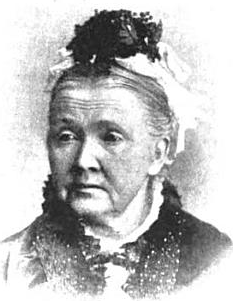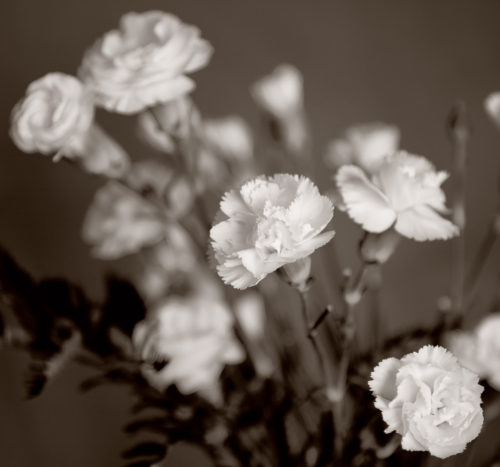TWH – Today is the second Sunday in May, which means its Mother’s Day for Americans as well as others around the world. Writers often attribute this modern celebration to ancient festivals honoring the mother goddess, or to Christian tributes to the Virgin Mary. While most religious cultures did or do celebrate maternity in some way, the connections between any of these sacred celebrations and our modern secular holiday are tenuous at best.
 Some believe that the American holiday finds its earliest roots in an old English religious tradition called “Mothering Sunday.” On the fourth Sunday of Lent, Christians journeyed far and wide to a “mother” cathedral rather than worshiping in their local “daughter” parish. Over time the day evolved into a secular holiday during which children gave gifts to their mothers.
Some believe that the American holiday finds its earliest roots in an old English religious tradition called “Mothering Sunday.” On the fourth Sunday of Lent, Christians journeyed far and wide to a “mother” cathedral rather than worshiping in their local “daughter” parish. Over time the day evolved into a secular holiday during which children gave gifts to their mothers.
It wasn’t until the late 1800s that there was a call for a uniquely American Mother’s Day celebration. After seeing the horrors of the Civil War, Julia Ward Howe, a suffragist, abolitionist, writer and poet, began an aggressive campaign for a national Mother’s Day. On the second Sunday in June of 1870, Howe made a passionate plea for peace and proclaimed the day Mother’s Peace Day.
We will not have great questions decided by irrelevant agencies. Our husbands shall not come to us, reeking with carnage, for caresses and applause. Our sons shall not be taken from us to unlearn all that we have taught them of charity, mercy and patience….The sword of murder is not the balance of justice. Blood does not wipe out dishonor, nor violence indicate possession.
Not only did Howe call for a national holiday, she also called for a women’s council that would “promote the alliance of the different nationalities, the amicable settlement of international questions, [in] the great and general interests of peace.”
The celebration of Mother’s Day, therefore, was first birthed in radical response to the horrors of war, then, propelled for ten years by female activists. To modern ears, Howe’s words almost has undercurrents of Twisted Sister’s rock anthem “We’re not gonna take it.”
Unfortunately, Howe’s dream never came into being. For ten years, she personally funded most of the Mother’s Peace Day celebrations. When she died,† so did Mother’s Peace Day.
Around the same time, in a small town in West Virginia, a similar idea was being cultivated. Ann Maria Reeves Jarvis, a Civil War nurse, had actively organized a series of “Mother’s Day work clubs.” Their mission was to teach women proper child care, provide war relief, curb infant mortality, and tend to the battle-wounded.
Like Howe, Jarvis advocated for peace and neutrality. She insisted that her mothers’ clubs treat both the Union and Confederate soldiers. After the war, Jarvis and other women created a Mother Friendship Day when mothers and former soldiers, from both sides of the war, came together in reconciliation.
After Jarvis died in 1905, her daughter Anna decided to honor her mother’s work. In 1907, on the second Sunday of May, the younger Jarvis held the first Mother’s Day celebration in her own home. Then, in 1908, she convinced leaders of two churches, one in Philadelphia and one in her hometown of Grafton, West Virginia, to celebrate the new holiday. Each mother was given a white carnation, her mother’s favorite flower.

[Photo credit: David Blackwell/flickr.]
Unfortunately, success brought way more than Jarvis ever wanted. Mother’s Day fell victim to commercialization. Themed cards and other products were produced and sold en masse. The post office printed stamps depicting Anne Reeves Jarvis with a white carnation. Mother’s Day was big business. By 1940, the disillusioned Jarvis had turned her back on the holiday completely. She was even arrested for protesting a few Mother’s Day events. Jarvis reportedly died poor, blind and alone in a Philadelphia sanitarium.
While modern Mother’s Day contains only tenuous connections to spiritual practice, the holiday is not without its own profound importance. Anna Jarvis conceived the holiday as an intimate day to thank one’s own mother for her sacrifice For activist Julia Ward Howe and Anne Reeves Jarvis, Mother’s Day was a symbolic celebration of motherhood. They saw women, specifically mothers, as the healers and peace makers.
Additionally, people of different religious beliefs will extend a spiritual thread into this otherwise secular holiday by extrapolating upon its basic meaning. For many Pagan and Heathen women, Mother’s Day is a unique opportunity to connect a mainstream secular tradition to their own spiritual journeys as mothers. On this day, such mothers can reflect on their maternal roles in society, examine their mundane responsibilities, and witness how their experience is mirrored within theology and religious practice.
In May 2014, Starhawk wrote:
On this Mother’s Day, let us also remember the many, many types of mothering: stepmothers, wicked and otherwise, adoptive mothers, birthmothers {sic], mothers who have lost their children, mothers of projects, plans, movements and creative ideas, aunties and mentors and advisors, mothers of fluid and changing gender, and of course, that mother who sustains and nurtures us all, our Mother Earth! What will it take to create a world that truly honors mothering, nurturing, caring in all its forms?
Despite the holiday’s secular nature and over-commercialization, it has roots that are far deeper and more soul-stirring than the simple niceties of white carnations and overpriced orchids. Mother’s Day was originally born out of the early feminist and women’s rights movements. It was fueled by American women’s need to stand against destructive political powers, while simultaneously uplifting the role and value of women in society.
This spirit and this voice can be heard today in the cries of many women living in both the Unites States and around the world. It is a primal defiance, living at the root of motherhood, in order to protect the future.
While much of Mother’s Day’s radical beginnings have been lost in time and buried under pounds of tulle and floral bouquets, some Americans do find ways to connect with a deeper meaning, even if its just a few moment to stop, to witness the sacrifices of mothers, of all kinds, and to say, “Thanks.”

[The above article was adapted, in part, from previous articles, originally published in 2014 and 2015]
The Wild Hunt is not responsible for links to external content.
To join a conversation on this post:
Visit our The Wild Hunt subreddit! Point your favorite browser to https://www.reddit.com/r/The_Wild_Hunt_News/, then click “JOIN”. Make sure to click the bell, too, to be notified of new articles posted to our subreddit.
